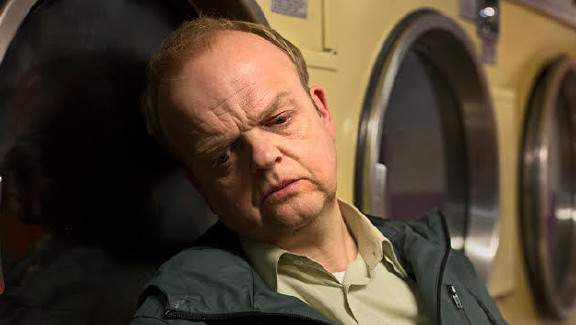@Cineworld Sat 24 June 2017 & Sun 25 June 2017
Part of the Edinburgh International Film Festival
Experienced character actor Toby Jones plays Carl, an ex-convict embarking on his first date in fifteen years. However, the events of the date, as well as the reappearance of his estranged mother (a creepily effective Anne Reid), result in a growing instability, as his reality becomes increasingly intermingled with psychological fragility.
As Carl, Jones provides a vulnerable performance that relies less on histrionics and more on a mild-mannered unravelling as he tries in vain to control elements in his life which are beyond his grasp. The audience is often left as confused as Carl as a result of the film’s complex, non-linear structure, which gives the likes of Memento a run for their money, with significant events involving Carl repeated from multiple perspectives, either with his mother or his potential date on the receiving end of Carl’s violent actions.
Whilst there are tantalising clues provided throughout as to the exact order of events and the nature of Carl’s crime, the film’s structure in itself resembles a kaleidoscope. It consists of a jumbled assortment of fractured scenes showing Carl’s date, which appears to end with a violent murder; Carl arguing with his mother, who increasingly shows possible signs of representing his guilty conscience; and Carl trying to cover up his actions on the fateful night as well as avoid police suspicion. However, the use of multiple interpretations further muddy the waters. Characters shown dead are later shown to be alive but injured, and ambiguous lines of dialogue make it unclear whether Carl is bothered by the reappearance of his mother reawakening long-buried familial issues, or whether he is still haunted by the guilt of what happened that night.
Writer-director Rupert Jones uses this ambiguity to great effect by using recurring visual and thematic motifs without resorting to sub-David Lynchian attempts at surreal imagery to represent Carl’s deteriorating mental state. A fine example of this is a recurring image of a broken chair being thrown down a flight of stairs, repeated throughout the film, with its significance only becoming clear towards the film’s end. Whilst this results in an often confusing presentation of events that requires multiple viewings to fully understand, it is stylistically and structurally innovative in a way that so many other British thrillers of this nature simply are not.
Whilst the narrative complexity of Kaleidoscope may not be for everyone, it is an ambitious project that is sure to gain a cult following in years to come.
